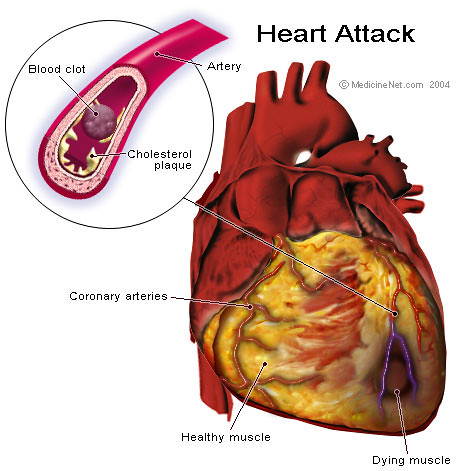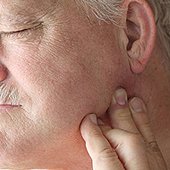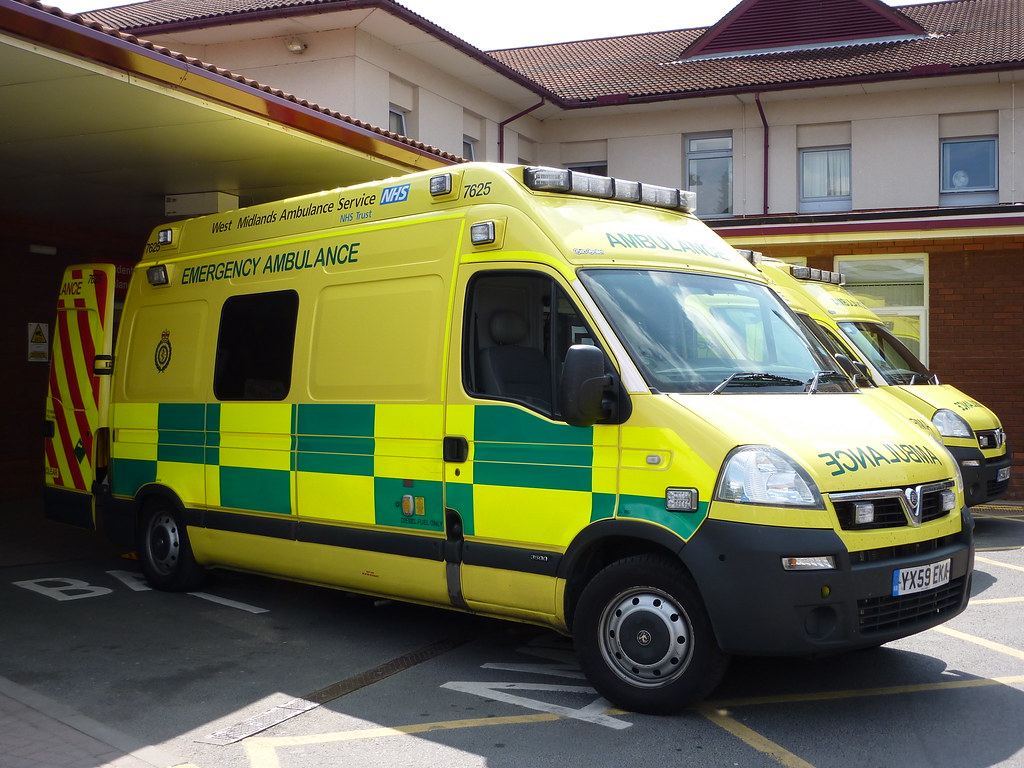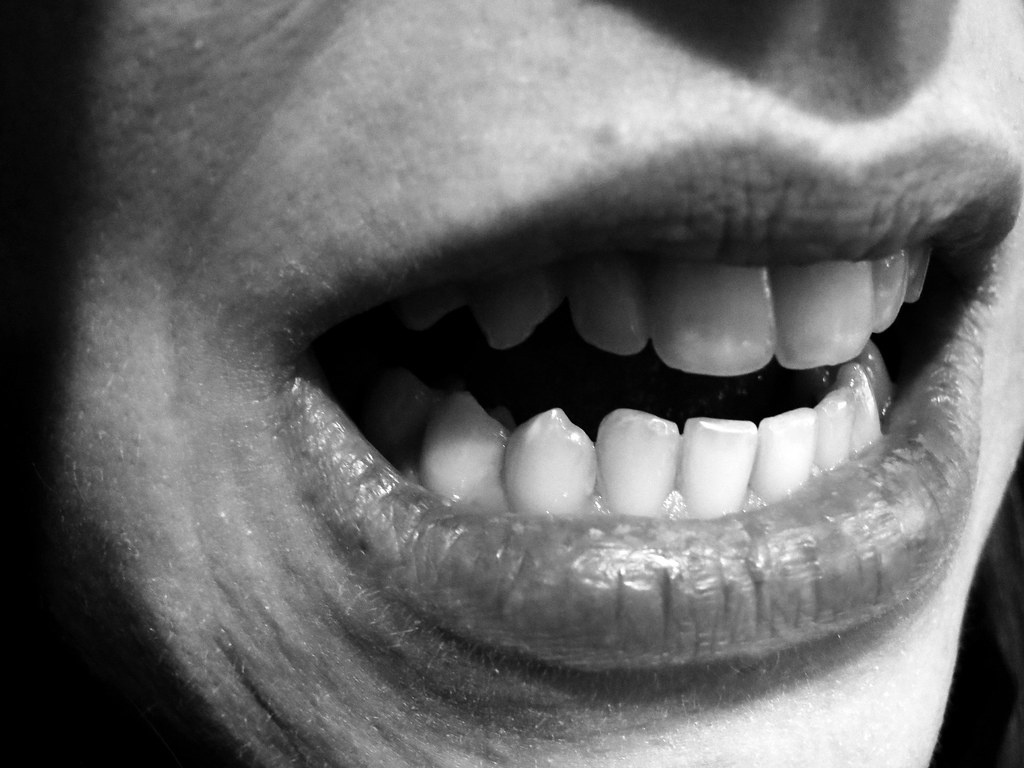
Jaw pain can be a perplexing symptom, often dismissed as a dental issue or a simple muscle strain. While many individuals might attribute discomfort in their jaw to benign causes, it is absolutely essential to remain vigilant about its potential implications, especially when it persists or worsens. In some critical cases, jaw pain may serve as a symptom of underlying health issues, such as cardiovascular problems, making professional evaluation vital. The ability to understand the connection between jaw pain and heart health is crucial for ensuring timely medical intervention and potentially saving lives.
Most people tend to link heart attacks exclusively with crushing chest pains, overlooking other significant warning signs. However, the heart and the jaw share intricate pathways of nerves, a fact that can lead to a phenomenon known as ‘referred pain.’ This is particularly relevant when discussing heart attack symptoms, as the brain can sometimes misinterpret the signals being sent from the heart, believing they originate from the jaw or other areas like the neck, shoulders, or back.
This in-depth article aims to shed light on jaw pain as a crucial heart attack warning sign, delving into its characteristics, associated symptoms, and the specific considerations for women. By understanding these vital indicators, individuals can be empowered to make informed decisions about their health and seek prompt medical attention when it matters most, ultimately contributing to better outcomes and improved heart health.
1. **The Unseen Link: Jaw Pain and Heart Attacks**The phenomenon of jaw pain signaling a heart attack is often attributed to the body’s intricate nervous system. The heart and the jaw, despite their seemingly disparate locations, share similar nerve pathways. This anatomical connection is what allows for the experience of referred pain, where discomfort from an internal organ is felt in another part of the body. When the heart experiences stress or damage, such as during an ischemic event like a heart attack, the brain receives pain signals that it may then misinterpret as originating from the jaw rather than the actual source of distress.
During a heart attack, the critical lack of oxygenated blood flow to the heart muscle leads to tissue damage and pain. The pain signals generated by the damaged heart tissue travel through the nervous system. Due to the shared neural pathways, the brain can become confused about the exact origin of these signals. Consequently, it perceives pain in the jaw, or sometimes the neck, shoulders, or back, instead of or in addition to the chest, which is the direct site of the cardiac event.
Furthermore, the heart and jaw share specific nerves, such as the vagus nerve, which further contributes to this referred pain. While jaw pain alone can be a warning sign, the combination of chest pain with jaw pain is considered particularly dangerous for the heart. It emphasizes the severity of the underlying cardiac issue and underscores the urgent need for medical attention to prevent further complications.
The reason why jaw pain often goes unnoticed or is dismissed as a symptom is precisely because most people are not aware of this neurological connection. They tend to solely associate heart attacks with intense chest discomfort. This lack of awareness can unfortunately lead to delays in seeking crucial medical help, making it imperative to educate the public on these less typical, yet significant, warning signs.
2. **Duration and Nature: How Long Does Jaw Pain Last Before a Heart Attack?**The duration and character of jaw pain preceding a heart attack can vary significantly from person to person. It is not always a sudden, acute onset. Often, it can begin as an on-and-off sensation, with the pain lasting anywhere from a few days to, in some cases, several weeks. This intermittent nature can make it particularly challenging to recognize, as it might not initially seem like a severe or persistent problem.
This type of jaw pain may not be intensely severe and frequently comes and goes. Its fluctuating presence makes it very difficult to pinpoint as a potential heart attack symptom, and consequently, it is often easy to ignore. This differs considerably from the typical understanding of how long acute heart attack pain lasts, which is often perceived as continuous. However, heart attack pain itself depends on each individual’s condition and can also present in varied ways.
When jaw pain is related to a heart attack, it often manifests as a feeling of pressure, tightness, or a general aching sensation. This discomfort is typically unexplained and can appear quite suddenly, without any clear preceding dental or muscular cause. It’s not uncommon for this pain to be accompanied by other symptoms, such as chest pain or shortness of breath, further signaling a potential cardiac issue.
Specifically, cardiac jaw pain can sometimes radiate to the lower jaw, causing a diffuse discomfort in the lower teeth rather than being localized to a single specific tooth. This characteristic helps differentiate it from common dental problems, which usually present with sharper, more localized pain. Recognizing this diffuse, unexplained pressure is a critical step towards considering a cardiac origin.

3. **Distinguishing Heart-Related Jaw Pain: Key Indicators**It can be inherently difficult to distinguish jaw pain that is related to a heart attack from other common causes of jaw discomfort, such as dental problems, temporomandibular joint (TMJ) disorders, or even muscle strain. Many people instinctively attribute jaw pain to these more benign issues, which can delay life-saving medical attention. Therefore, understanding the specific characteristics of heart attack-related jaw pain is paramount for accurate self-assessment and timely action.
Jaw pain signaling a heart attack typically occurs suddenly and without an obvious or clear reason. Unlike pain from a dental cavity or a muscle injury, there might not be any preceding trauma, bite changes, or specific actions that trigger it. Furthermore, this type of pain is frequently associated with exertion or stress. Physical activity or emotional distress can trigger or intensify the discomfort, a key indicator that the heart might be under strain.
Crucially, heart-related jaw pain is almost always accompanied by other systemic symptoms that point towards a cardiac event. These can include a sensation of chest pain or discomfort, shortness of breath, sudden sweating, feelings of nausea, or lightheadedness. The presence of any of these additional symptoms alongside jaw pain should immediately elevate concerns beyond a simple dental or muscular issue and prompt urgent medical evaluation.
Moreover, the pain from a heart attack often has a radiating quality. It may start in the chest and then spread or radiate to the jaw, neck, shoulders, or arms. This radiating pattern is a classic sign of cardiac distress, as opposed to localized jaw pain which typically stays confined to the jaw area. If you experience jaw pain that feels like it’s spreading from your chest or accompanied by any of these other symptoms, it is vital to seek emergency medical attention without delay.

4. **Jaw Pain as a Major Warning Sign, Especially for Women**While jaw pain is not often considered the most common symptom of heart attacks, it is undeniably an identified and major warning sign, particularly among women. When men typically experience the classic crushing chest pain, women are frequently more prone to what are termed ‘atypical’ symptoms. These can include, but are not limited to, jaw pain, back pain, shortness of breath, and nausea.
This difference in symptom presentation has led to a ‘silent crisis’ in women’s heart health, as noted by Dr. Hesham Tayel, consultant of Cardiology at International Modern Hospital Dubai. Because these symptoms deviate from the widely recognized signs, heart disease in women continues to be under-recognized, under-diagnosed, and under-treated. This misconception that heart disease primarily affects men exacerbates the problem, leading to delays in seeking care.
Heart-related jaw pain in women often manifests as an unexplained ache or pressure, which can sometimes radiate to the neck, shoulders, or back. It typically occurs suddenly, often with exertion or stress, and importantly, lacks a clear dental or muscular cause that could otherwise explain the discomfort. This unique presentation requires heightened awareness from both patients and medical professionals to avoid misdiagnosis.
Recognizing jaw pain as a potential heart attack symptom is absolutely essential. Prompt recognition can lead to immediate medical attention, which significantly improves outcomes. Conversely, if these symptoms are left untreated in the event of a heart attack, they can escalate, potentially leading to severe complications such as congestive heart failure. Early intervention is key to preserving heart function and improving survival rates.
Dr. Naveed Ahmed, Head of Department of Cardiology for Aster Hospitals and Clinics in the UAE, highlights that women are often underrepresented in cardiac studies. This lack of representation leads to insufficient awareness among both doctors and patients about gender-specific symptoms. When medical trials fail to represent certain populations, their unique experiences are not adequately projected in the studies, which can cause general practitioners to miss these atypical symptoms.
Read more about: Amazon’s Secret Stash Revealed: Unbelievable Deals on Home Essentials You Need Right Now!

5. **Left vs. Right Jaw Pain: Does the Side Matter?**The location of jaw pain can offer important insight into whether it might be linked to a potential heart attack. While jaw pain from a heart attack can occur on either side or both sides of the jaw, and may radiate from the chest, specific patterns are often observed that can guide suspicion towards a cardiac origin.
Left-sided jaw pain is more commonly indicative of a heart attack. This prevalence is attributed to the heart’s nerve pathways, which tend to favor the left side of the body. When heart pain is referred, it frequently manifests in areas like the left arm, left shoulder, or the left side of the jaw. Experiencing persistent discomfort on the left side of the jaw could signal angina (chest pain caused by reduced blood flow to the heart) or even indicate a possible impending heart attack.
Although this symptom can affect both men and women, left jaw discomfort is particularly noteworthy in women as a potential warning sign of a heart attack. If you experience persistent jaw pain, especially if it worsens, or if it is accompanied by other critical warning signs of a heart attack such as nausea or difficulty breathing, it is imperative to call your doctor or emergency services without delay.
While doctors do not classically associate right jaw pain with heart attacks as frequently as left-sided pain, its presence cannot be definitively ruled out as a cardiac symptom. This is especially true if the right jaw pain is accompanied by other suspicious signs like chest tightness, unexplained fatigue, or difficulty breathing. Typically, right jaw pain is more often caused by dental issues, muscle tension, or musculoskeletal problems. However, if you are uncertain about the cause of the pain, or if it presents alongside any possible cardiac symptoms, seeking a medical evaluation is crucial to rule out any serious underlying causes related to your heart.

6. **Beyond Jaw Pain: Other Crucial Accompanying Heart Attack Symptoms**While the focus on jaw pain is essential, it is equally vital to understand that heart attack symptoms can vary significantly among individuals. Some people may experience very mild symptoms, while others endure severe ones. Furthermore, it is important to acknowledge that some individuals may not exhibit any symptoms at all, or their symptoms might be so subtle that they are easily overlooked. A comprehensive awareness of the broader spectrum of signs is therefore indispensable.
Typical signs of a heart attack extend beyond jaw pain and often include a sensation of pressure, tightness, pain, squeezing, or aching in the chest. This discomfort can range from mild to severe and may be persistent or come and go. It is the most commonly recognized symptom and should always be treated with extreme urgency when it occurs.
Beyond chest discomfort, pain or discomfort often radiates to other areas of the upper body. This can include the arms (especially the left arm), the back, the neck, the jaw, or even the stomach. Accompanying these pains, individuals might experience cold sweating, unusual fatigue, a feeling similar to indigestion or heartburn, sudden dizziness or lightheadedness, and nausea. Shortness of breath, which may occur with or without chest discomfort, is another critical symptom.
It is particularly important to reiterate that women may experience atypical symptoms more frequently than men. These can include sudden, intense pain in the back, arm, or neck, in addition to or in place of chest pain. In some dire circumstances, sudden cardiac arrest can even be the initial symptom of a heart attack, underscoring the unpredictable nature of these events.
Many heart attacks happen suddenly, but it is also true that many people exhibit symptoms and warning signs for hours, days, or even weeks beforehand. An early warning sign could be persistent chest pain or pressure, often referred to as angina, which does not improve with rest. Recognizing these precursor symptoms can provide a crucial window for intervention and should never be ignored. Always prioritize seeking medical advice for any persistent or concerning symptoms related to your heart.
Read more about: Navigating the Complexities of Body Pain: A Definitive Guide to Chest, Shoulder, and Neck Discomfort

7. **Non-Cardiac Causes of Jaw Pain: Understanding Other Potential Sources**Jaw pain is a common concern, often felt as an ache or stiffness in the jawbone or around the ears. While typically mild, it can significantly impact daily life. Not all jaw pain signals a heart issue; recognizing when it might is equally important for timely action.
Various non-cardiac conditions cause jaw discomfort, including common dental problems like toothaches and gum disease. Teeth grinding (bruxism) and even fractured jaws also contribute. Differentiating these from heart-related pain is key for appropriate medical assessment.
One prevalent non-cardiac cause is Temporomandibular Joint (TMJ) disorders. The TMJ connects the jaw to the skull, enabling essential functions. Dysfunction can lead to jaw muscle stiffness, painful clicking, localized jaw/face/neck pain, and sometimes limited jaw movement.
Bruxism, the involuntary grinding and clenching of teeth, often occurs unknowingly, causing constant tension in jaw muscles. Symptoms include jaw soreness, headaches, and potential tooth damage.
Vascular and neurological conditions also present as jaw pain. Temporal arteritis causes jaw pain when chewing due to blood vessel inflammation. Neuralgia, like trigeminal neuralgia, causes sharp, electric shock-like facial pain from nerve irritation.
Read more about: Navigating the Complexities of Body Pain: A Definitive Guide to Chest, Shoulder, and Neck Discomfort

8. **When to Seek Immediate Medical Attention or Call Emergency Services**Certain jaw pain warning signs demand immediate attention. Sudden, severe jaw pain radiating to the shoulder, neck, arm, or chest, especially on the left, is a critical indicator of a potential heart attack. This suggests a cardiac origin, not a localized dental or muscular issue.
The situation intensifies if jaw pain accompanies other critical symptoms: unexplained nausea, sudden lightheadedness, severe shortness of breath, chest pressure, or inexplicable weakness. Any combination of these alongside jaw pain warrants immediate alarm.
Jaw pain unresponsive to rest, position changes, or over-the-counter medications is a crucial red flag. This lack of improvement strongly suggests an underlying heart issue, distinguishing it from common dental or muscle problems.
Given a heart attack’s potential severity, avoid any delay. Call emergency services immediately. Quick action significantly increases survival, reduces heart damage, and improves recovery prospects. Early intervention is undeniably life-saving.
If you experience persistent cardiac symptoms, consult your cardiologist promptly. Medical evaluation and ongoing care are essential for managing heart health. Your proactive approach makes a difference.
Read more about: Slash Your Medical Bills: Practical Lifehacks to Save Thousands and Conquer Healthcare Debt

9. **Diagnosis and What to Expect During an Emergency Medical Evaluation**Heart disease remains the leading cause of death in the United States. Recognizing warning signs and swiftly accessing emergency care dramatically increases survival and recovery likelihood. Knowing what to expect can ease anxiety.
Hospital emergency departments provide 24-hour care. With heart attack symptoms, your treatment will be prioritized for immediate attention. The medical team focuses on addressing the issue, alleviating symptoms, and confirming diagnosis.
Evaluation starts with a comprehensive medical history and physical examination. An electrocardiogram (EKG), measuring heart’s electrical activity, is crucial for diagnosing a heart attack. Continuous EKG monitoring checks for arrhythmias and provides real-time cardiac data.
Further diagnostic steps include blood tests for markers indicating heart muscle damage. Medications like oxygen, nitroglycerin, aspirin, and clot-busting drugs may be administered swiftly to stabilize your condition and minimize damage.
Be prepared to answer questions about your symptoms, pain, health issues (including heart disease history), and risk factors. Inquiries also cover lifestyle choices, medications, supplements, and allergies. Accurate information is vital.
Read more about: Beyond the Surface: Critical Pancreatic Cancer Warning Signs, Including Those That Start in Your Legs, You Should Never Ignore

10. **Essential Preventive Measures: Cultivating a Heart-Healthy Lifestyle**Preventing heart disease is crucial for reducing heart attack risk. Coronary artery disease (CAD) affects blood flow to the heart. Implementing a heart-healthy lifestyle significantly influences overall well-being and cardiac health.
A balanced diet is paramount. Include lean proteins, fruits, vegetables, whole grains, and low-fat dairy. Foods low in cholesterol, trans fats, and saturated fat, while high in fiber, help prevent high cholesterol. Limiting sugar and salt manages diabetes and lowers blood pressure.
Maintaining a healthy weight is critical. Obesity and excess weight increase heart disease risk by straining the heart and blood vessels. Using a Body Mass Index (BMI) calculator helps determine a healthy weight range, guiding management efforts and reducing cardiovascular load.
An active lifestyle is invaluable. Research shows regular exercise reduces blood pressure, cholesterol, and aids weight management. It also enhances mood, boosts energy, and significantly reduces stress—a heart disease risk factor. Aim for 30 minutes of moderate exercise five days a week; choose enjoyable activities for adherence.

11. **Essential Preventive Measures: Regular Health Screenings and Risk Factor Management**Beyond lifestyle, proactive health screenings are essential for effective heart disease prevention. Routine check-ups monitor heart health and identify emerging risk factors early. These insights guide personalized preventive strategies.
Key screenings include regular blood pressure checks for hypertension. Cholesterol level assessments should occur every four to six years, or more frequently with existing high cholesterol or a family history.
Diabetes screenings are critical. If diagnosed, vigilant blood sugar monitoring is imperative. Discuss management strategies with your physician, including lifestyle modifications and treatments, to control blood sugar and prevent complications.
Actively manage other significant CAD risk factors: unhealthy cholesterol, high blood pressure, physical inactivity, being overweight, smoking, and unbalanced diet. Family history and older age also increase risk; discuss these with your doctor to tailor prevention.
Understanding these risk factors empowers you to safeguard heart health. Regular communication with your healthcare team, adherence to screenings, and a heart-healthy lifestyle form a comprehensive strategy for preventing heart attacks and promoting long-term cardiovascular well-being.

12. **Specific Considerations for Women’s Heart Health: Addressing Unique Challenges**Women often experience ‘atypical’ heart attack symptoms, making jaw pain a particularly significant warning sign. Unlike classic chest pain, women are more prone to less obvious signs like jaw pain, back pain, shortness of breath, and nausea. This leads to under-recognition and under-treatment of heart disease in women.
Dr. Naveed Ahmed confirms that “Females may not present with typical symptoms of chest pain.” He notes women might have “only neck pain, jaw pain or numbness in the shoulder or just pain between the shoulder blades. Others may complain of indigestion, palpitations or unusual fatigue.” These varied symptoms delay crucial medical attention.
Dr. Hesham Tayel calls this difference a “silent crisis” in women’s heart health. Cardiovascular diseases are the leading cause of death for women globally, accounting for nearly 30% of female deaths—twice as many as cancer. This stark reality demands greater awareness.
A significant factor is women’s underrepresentation in cardiac studies, as Dr. Ahmed highlights. This leads to insufficient awareness among professionals and patients about gender-specific symptoms. When trials don’t adequately represent populations, their experiences are missed, causing general practitioners to overlook atypical symptoms.
Furthermore, women face distinct risks beyond common factors like high blood pressure, diabetes, and smoking. Dr. Tayel notes issues such as “pregnancy-related complications, autoimmune diseases, and hormonal shifts; especially before and after menopause.” Dr. Kamal Al Abdi explains women’s CVD risk rises sharply post-menopause due to lost estrogen protection.
Understanding jaw pain as a critical heart attack precursor, especially for women, is paramount. Dismissing this discomfort can be dangerous; recognizing its serious potential can save lives. This awareness is vital if you are over 40 with risk factors like high blood pressure, high cholesterol, diabetes, or a family history of heart disease. If jaw pain accompanies unexplained fatigue, nausea, shortness of breath, or chest tightness, seek immediate professional medical help. Don’t gamble on the pain disappearing; early detection and treatment prevent severe heart damage and improve recovery. Prioritize your heart health by acting swiftly and decisively.





